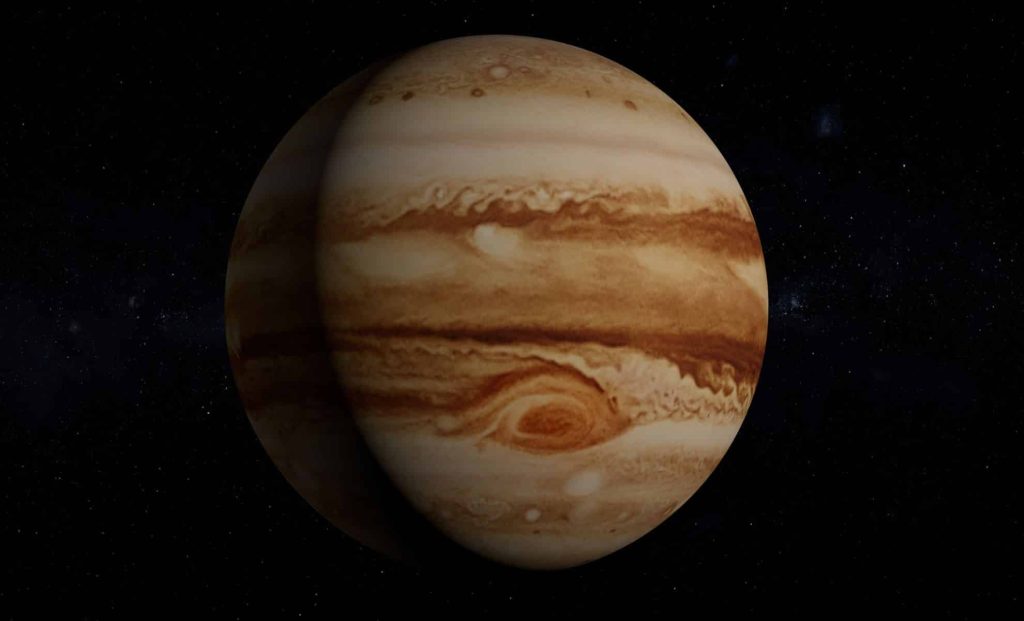Jupiter’s Great Red Spot (GRS), the solar system’s largest storm, has been shrinking over the past century, and recent research has provided new insight into why this iconic feature is shrinking.
The Great Red Spot: An Overview
of Great Red Spot teeth, Jupiter Southern HemisphereIt is more than 10,000 miles wide and has winds of over 200 miles per hour. The Great Red Spot has fascinated astronomers for centuries, but its origins and the reason for its reddish hue remain a mystery. Observations suggest that its width is fairly constant, but The length has been significantly reduced It has fallen from 40 degrees longitude in the 19th century to just 14 degrees longitude in recent years.
Caleb Keaveney“Many people have observed the Great Red Spot over the past 200 years and have been fascinated by it, just like me,” the Yale University doctoral student said of the continuing mystery surrounding it. Despite extensive research, astronomers still continue to debate the exact origins, formation and color of this gigantic storm.
Minor storm impacts
Recent research by a team led by Caleb Keaveney The study suggests that interactions with smaller, more ephemeral storms may play an important role in regulating the size of the Great Red Spot. Icarusanalyzed these interactions using a series of 3D simulations.
“Our numerical simulations show that we can modulate the size of the Great Red Spot by subjecting it to small storms, as is known to happen on Jupiter,” Keaveney explained. The simulations found that these small storms strengthen the Great Red Spot and make it grow. But the lack of such interactions could be contributing to its current shrinking trend. By comparing simulations that include interactions with small storms with those that don’t, the researchers found compelling evidence that these small vortices play a key role in the dynamics of the Great Red Spot.
Comparison on Earth: Heat Dome and Atmospheric Block
In this study, Great Red Spot longevity High pressure systems on EarthThese systems, known as thermal domes or blocks, can cause extreme weather such as heat waves and droughts, and are maintained and amplified by interactions with smaller weather phenomena. “We’ve shown that thermal domes are maintained and amplified by interactions with nearby weather systems, which sparked the hypothesis that similar interactions on Jupiter may maintain the Great Red Spot,” said Keaveney.
These heat domes occur in the mid-latitudes of the Earth and are associated with the westerly winds of the jet stream. Great Red Spot upon Jupiter Operating on a similar principle, the presence of smaller weather systems can affect the lifespan and strength of larger atmospheric structures.
Starvation in Jupiter’s Great Red Spot
Another aspect explored in this study was Great Red Spot The Great Red Spot may be “starving” because of a decline in the number of small storms that feed it. Keaveney’s team ran simulations showing that a reduction in the number of small storms could cause the Great Red Spot to shrink over about 2.6 Earth years. “If that’s true, then the presence (or lack thereof) of small storms could be changing the size of the spot. Essentially, if there are lots of small spots, the sunspots get bigger, and if there are fewer small spots, the sunspots get smaller,” Keaveney said.
This hypothesis is Small storms on Jupiter This correlates with the gradual decline Great Red SpotThe study offers a potential explanation for the long-term variations in the storms and suggests that the presence of smaller vortices in Jupiter’s atmosphere could directly affect the magnitude of the GRS.
Changes in color and structure
In addition to the size change, Great Red Spot Also on display Color changeAlthough it is usually reddish-orange in color, it has been known to fade to pink. These color changes are thought to be the result of complex chemical reactions involving solar radiation and compounds such as ammonium sulfide and acetylene. Keaveney’s research shows that these chemical processes GRS Interactions and Jupiter’s South Equatorial Belt (SEB).
At SEB, Great Red Spot The region where the Great Red Spot is located periodically changes color and brightness, which can affect the Great Red Spot’s appearance. “Sometimes, the spot almost completely disappears due to complex interactions with a topography called the South Equatorial Zone,” Keaveney noted. These interactions further complicate understanding the Great Red Spot’s behavior and changing appearance.
Continued observation and future research
Shrink Great Red Spot It has been studied extensively using data from spacecraft such as Voyager, Galileo, Cassini, and Juno, as well as ground-based observations. Great Red Spot They will observe how Jupiter interacts with the rest of its atmosphere. Instruments on these missions will measure wind speeds, temperature, and the chemical composition of the atmosphere. Great Red Spotproviding a comprehensive view of this massive storm.
The researchers plan to continue refining the model to better understand its early formation and long-term evolution. Great Red Spot“Further modeling will allow researchers to refine their new findings and perhaps shed light on the early formation of the Great Red Spot,” Keaveney said. Ongoing research into the Great Red Spot not only improves our understanding of Jupiter’s atmosphere, but also provides insights into atmospheric processes that may apply to other planetary systems, including Earth.



